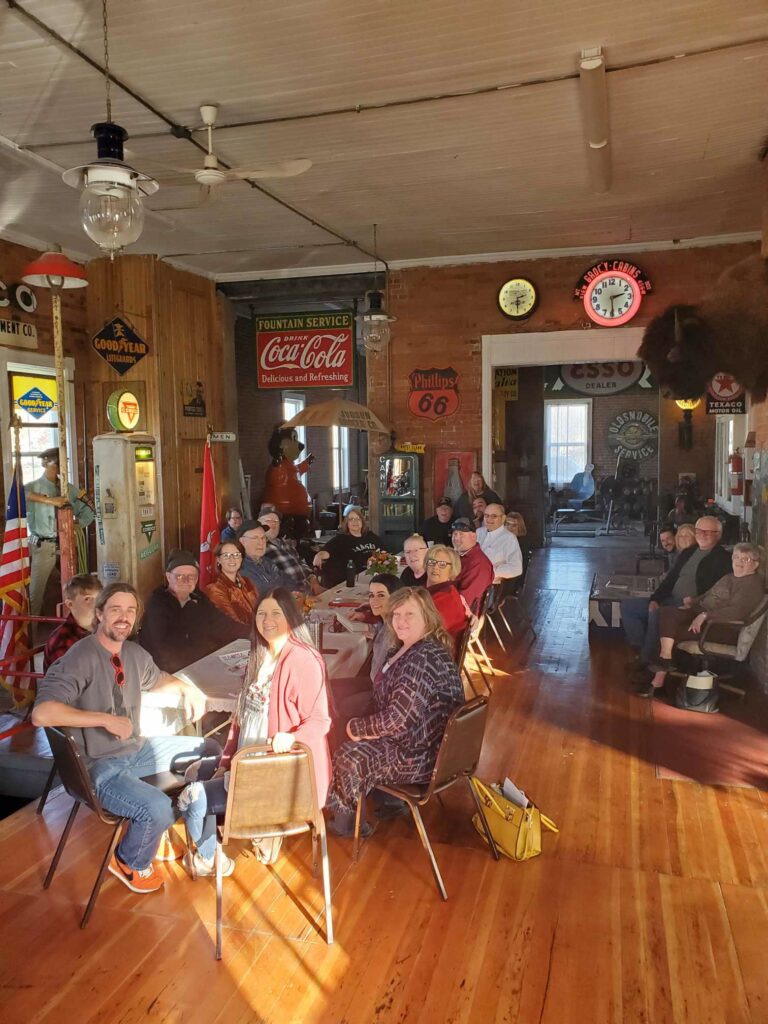Galva Manx Society
The Galva Manx Society has been resurrected! 25 people gathered for a meeting in November! Watch this space for updates.
This is an interesting history from the Manx Notebook.
Illinois
Outside of Cleveland and north-east Ohio, Manx settlements in the United States are much smaller, and are all younger. They are generally more dispersed than those of the Western Reserve, except perhaps in parts of Illinois.
As already pointed out, this State ranks second in the number of its members belonging to the North American Manx Association, and of the hundred odd people about half are now to be found in and around Chicago; most of the remainder live in the Galva and Peoria districts. The latter areas can claim to be the oldest Manx settlements in the State, since during the years 1848 and 1849 small groups of farmers from the Island arrived at Brimfield, whence some soon spread out to adjoining counties including Galva, Monmouth, Princeyule, Canton and Peoria in the north-central section of the State and on the western side of the Illinois river. Here was an area with characteristics very different from those of northern Ohio, since, instead of the wooded uplands which needed much toil to clear, there existed great lowlands, draining to the Mississippi, and forming part of the arable, or tall-grass prairies. The soil was generally deep and fertile, and the sod could be easily cut and turned, at any rate by the steel ploughs used after 1837, while timber was usually readily accessible. The area was thus very attractive and it now forms part of the ‘corn belt’, one of the world’s greatest storehouses of farming wealth.
Although Illinois had become a State of the American Union in 1818 its settlement was not particularly rapid, despite its fertility, until after the railway had reached Chicago (actually from Detroit in 1852) because, otherwise, access from the east was not easy. The easiest approach was, in fact, from the south via New Orleans and the River Mississippi, and this was the route followed by the first-recorded Manx settlers consisting of the Kelly family from Onchan. Their passage to New Orleans by sailing ship took seven or eight weeks (others took thirteen weeks), and then came the journey up the Mississippi and Illinois rivers to their destination, the last part being by stage coach. Other families followed, coming particularly from Onchan, Crosby and Peel as well as from various northern parishes such as Bride and Andreas; and the most characteristic Manx names represented were Crellin, Shimmin, Kaighin, Cowley, Collister, Gelling, Kermeen, Monier, Mylchreest, Carran, Kewley, Lewin, Bridson, Crow, Killip, Cain, Corkill, Looney, Clucas and Kneen.
The name Monier (pronounced Mo-neer with the accent on the second syllable) which appears in this list is of especial significance since it provides an excellent example of a Manx surname which has become extinct in the land of its origin while it is relatively widespread in the United States.20 The name can be traced back to at least the early sixteenth century in the Island, being particularly associated with the parishes of Bride and Andreas. The name has disappeared in the Isle of Man since about 1860, and one of the last families to hear it was that of William Monier, who had been a miller at the Dog Mill near Ramsey. In 1850 he left the Island with his wife, Jane Quayle, and their eight children to settle in Peoria, and descendants of that family consisting of the third, fourth and fifth generations, are settled over the United States from South Carolina through Illinois to California.
An interesting Manxman who went to live in the Peoria area during the 1850’s was a wealthy builder and contractor, William Cowley, who had a successful business in Memphis, Tennessee, where he was an extensive slave-holder. Shortly before the Civil War (1861) he freed his slaves and moved to the home he had built near Brimfield. and this became an ‘open house’ for newcomers from the Island until they could shift for themselves
Galva and Peoria have branches of the N.A.M.A., the former being the larger. In 1939 it was recorded that the Galva Manx Society had meetings attended by several hundred persons, and, as regards Peoria, it was said in the same year that although there were then probably not more than thirty who had been born in the Isle of Man, the area contained over 250 who were descendants of Manxmen. Since then the membership of the N.A.M.A. has declined in both centres owing largely to the inevitable mixture which has continued between Manx Americans and those of other cultural origins—Germans, Scandinavians, and other Europeans — in this typical Mid-West community which forms part of the great ethnic mixing-bowl of the United States.
Chicago, with its population of about five million, is the economic capital of the Middle West, and it has inevitably attracted many Manx people not only from other parts of North America, but directly from the Island itself. A notable period of immigration came after 1871 when, following Chicago’s disastrous fire, reconstruction work brought over many Manx builders and carpenters. In 1884 an enterprising Manxman, John J. Keig from Ballaugh, was helping the growth of marketing facilities by opening trading posts and carting produce to and from Chicago along the old plank roads. At the present day, therefore, the city contains a very large number of people with some Manx element, although no estimate has ever been made of its magnitude, engaged in a wide variety of occupations. Included amongst these may be noted a pathologist of much more than local fame, and an inventor who has proved very successful in discovering new methods of packing foods and other articles.



